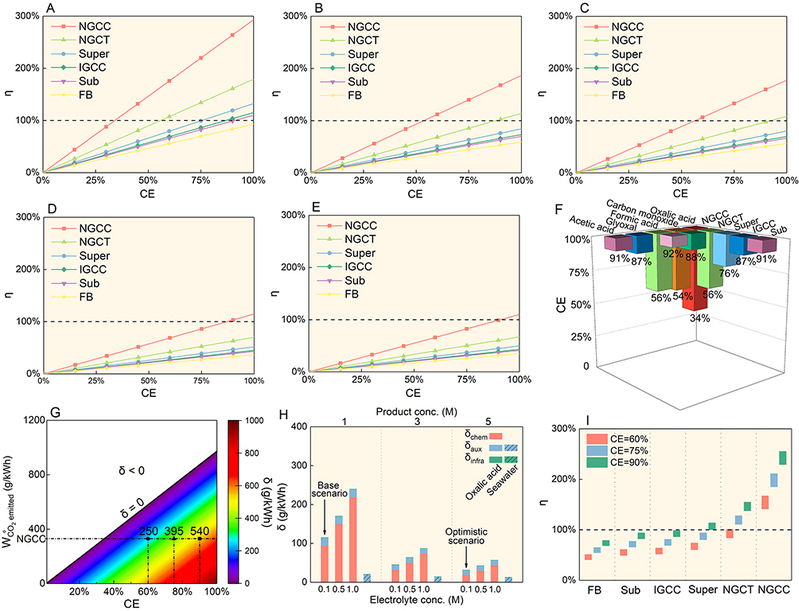A team of researchers led by Professor Lin Bolin at ShanghaiTech University have discovered a new principle for efficient CO2 mitigation, and, for the first time, explicitly overturned the dominant paradigm that the use of fossil fuel power to drive CO2 chemical reductions would create more CO2 emissions than it would reduce CO2. The researchers propose a progressive strategy for global CO2 mitigation.
Their study, titled “A Simple Framework for Quantifying Electrochemical CO2 Fixation,” was published online with open access on Joule on February 26, 2018. Undergraduate student Chen Anqi is the first author and Professor Lin Bolin is the corresponding author. Joule, a sister journal to Cell, focuses on outstanding and insightful research, analysis, and ideas addressing the need for more sustainable energy.
Limiting average global temperature rise well below 2℃ relative to pre-industrial levels by 2100 via substantial emission abatements of greenhouse gases, especially CO2, is one of the greatest global challenges in this century. Failure to meet the target set in the Paris Agreement on Climate Change has been widely projected to cause severe socioeconomic damage due to adverse climate changes from rapid global warming. Despite growing global awareness of the seriousness of global warming, there is insufficient attention being paid to the urgency of the situation.
The authors estimate that without immediate worldwide action, the remaining carbon budget will very likely run out in ca. two decades, based on synthetic analysis of available data, particularly current global CO2 emissions ca. 41 gigatonnes annually with growing trend and the remaining carbon budget only ca. 800 gigatonnes to meet the temperature-control target in 2016 according to Intergovernmental Panel on Climate Change (IPCC), Energy Information Administration (EIA) of USA and The Global Carbon Project. A “golden triangle” with three key vertexes—“mitigation efficiency,” “storage stability,” and “economic cost”—is conceptualized for the first time as a qualitative principle to gauge the feasibility of various CO2 mitigation strategies. Extensive examination of available data, especially from the reports by International Energy Agency (IEA), suggests that aside from carbon capture and storage (CCS), chemical fixations of CO2 (CFC) with high “storage stability” can substantially abate CO2 emissions.
Inspired by Einstein’s philosophy of simplicity, Chen and Lin creatively formulate intricate and wide-ranging CO2 mitigation processes with two very simple equations, introducing a mass-per-unit-energy concept for both CO2 emission and fixation. Straightforward calculations based on the mass-per-unit-energy equations directly provide the first-ever set of figures of merit quantifying intrinsic abatement capacities of diverse electrochemical CO2 fixations and thus reveal that electrochemical reductions of CO2 to nongaseous chemicals with high oxidation states (i.e. fewer electrons transfer) is the key principle for high “mitigation efficiency.” In particular, the widely overlooked oxalic acid has high “mitigation efficiency” and much higher “storage stability” than CO2 and is a nontoxic industrial raw material with economic benefit. The fixation to oxalic acid can serve as a progressive strategy for global CO2 mitigation.
In spite of their rapid adaptation, low-carbon electric energies like wind or solar generated energy are still too small in scale to drive substantial CO2 reduction toward the temperature-control target in the next two decades before exhausting the remaining carbon budget. Therefore, the authors propose that chemical reduction routes need alternative energy supply already or soon to become available in large scale in order to allow time for the gradual growth and deployment of decarbonized energies to eventually achieve the temperature-control target.
Joule is published monthly by Cell Press, and is a new home for outstanding and insightful research, analysis, and ideas addressing the need for more sustainable energy. A sister journal to Cell, Joule spans all scales of energy research, from fundamental laboratory research into energy conversion and storage up to impactful analysis at the global level.
Read more at: http://www.cell.com/joule/fulltext/S2542-4351(18)30049-7





